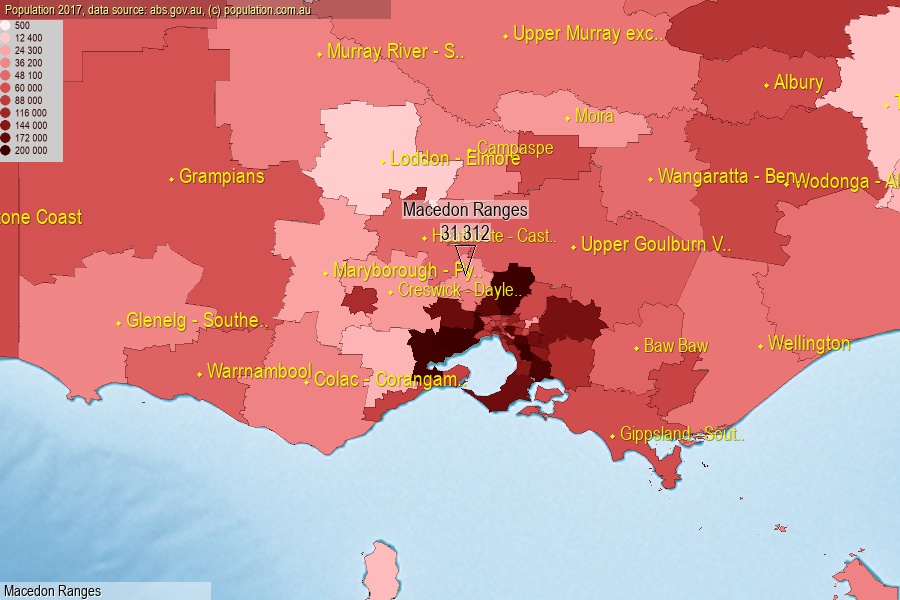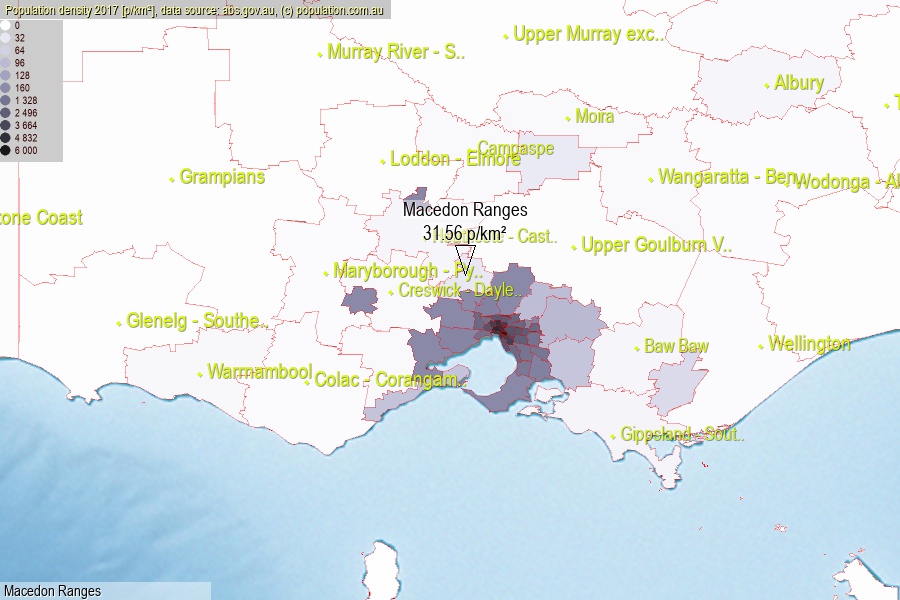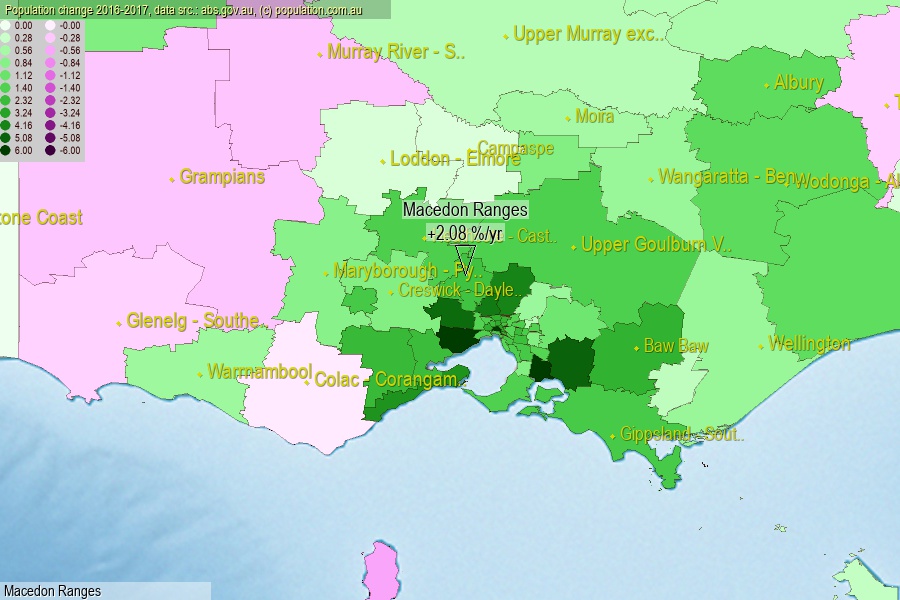 population.com.au
population.com.auLast official estimated population of Macedon Ranges (as Statistical Area Level 3) was 31 312 people (on 2017-06-30)[2]. This was 0.13% of total Australian population and 0.487% of VIC population. Area of Macedon Ranges is 992.00 km², in this year population density was 31.56 p/km² . If population growth rate would be same as in period 2016-2017 (+2.08%/yr), Macedon Ranges population in 2025 would be 36 918. [0]



Click to enlarge. Macedon Ranges is located in the center of the images.
Population [people], population density [p./km²] and population change [%/year] [2]
View borders » (new window) [4]
[1991-1992] +1.87 %/Y
[1992-1993] +2.12 %/Y
[1993-1994] +1.66 %/Y
[1994-1995] +1.08 %/Y
[1995-1996] +1.97 %/Y
[1996-1997] +3.43 %/Y
[1997-1998] +3.01 %/Y
[1998-1999] +2.53 %/Y
[1999-2000] +2.19 %/Y
[2000-2001] +2.93 %/Y
[2001-2002] +0.80 %/Y
[2002-2003] +1.20 %/Y
[2003-2004] +1.79 %/Y
[2004-2005] +1.43 %/Y
[2005-2006] +1.26 %/Y
[2006-2007] +1.35 %/Y
[2007-2008] +1.86 %/Y
[2008-2009] +2.67 %/Y
[2009-2010] +1.68 %/Y
[2010-2011] +1.58 %/Y
[2011-2012] +2.40 %/Y
[2012-2013] +1.85 %/Y
[2013-2014] +2.03 %/Y
[2014-2015] +2.29 %/Y
[2015-2016] +2.84 %/Y
[2016-2017] +2.08 %/Y
[0] Calculated with linear interpolation from officially estimated population
[1] Read more about SA3 and Australian Statistical Geography Standard (ASGS) on abs.gov.au
[2] Population data from Australian Bureau of Statistics (Population and density: 2017; change: 2016-2017)
[3] Digital Boundaries: Australian Statistical Geography Standard (ASGS) 2016.
[4] Border coordinates are simplifyed using Ramer-Douglas-Peucker algorithm.